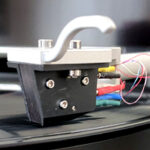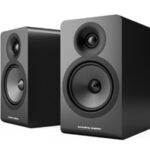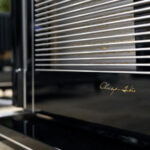- Home
- Equipment Reviews
-
Amplification Digital Integrated Mono Block Preamplifier Phono Solid State Tube Analog Sources Cartridges Tape Tone Arms Turn Tables Digital Sources Digital Disc Players DACs Music Servers Streaming Music Services
-
Accessories Power Conditioners Room Accoustics Racks & Stands Audio Software Other iPod iPod Speakers iPod Headphones iPod Transports Headphones Over Ear On Ear In Ear Headphone Amplifier
-
- Audio News
- Event Reports
- California Audio Show, San Francisco
- Consumer Electronics Show
- T.H.E. Show
- Rocky Mountain Audio Fest
- AXPONA
- Salon Son & Image
- Hi-Fi Show & AV Expo
- High End
- Lone Star Audio Fest
- Capital Audio Fest
- TAVES - Toronto Audio Video Entertainment Show
- AK Fest
- Home Entertainment Show
- New York Audio $ AV Show
- Open House Events
- Spotlight
- Music
- The Columns
- 2024 California Audio Show
Latest Reviews & Audio News
-

Technics SU-R1000 reference stereo integrated amplifier Review
(April 5, 2024) -

Computer Audio Design GC 1.1 & GC3.1 Ground Control external grounding systems Review
(April 5, 2024) -

Andy Grove of Audio Note UK on IO LTD
(March 23, 2024) -

Audio Note UK IO Limited field-coil cartridge system Review
(March 26, 2024) -

EMM Labs MTRX monoblock Input Board Upgrade Review
(March 7, 2024) -

May 2018 Sibelius Violin Concerto concert video via Berliner Philharmoniker Digital Concert Hall app
(February 16, 2024) -

Aurender N20 Ultra High Performance digital output network transport Review
(February 15, 2024) -

Benchmark Media AHB2 THX AAA stereo amplifiers Review
(January 18, 2024) -

Nelson Pass Interview 2023
(December 6, 2023) -

Interview with singer, pianist Fiona Joy Hawkins and singer, violinist Rebecca Daniel at 2023 CAS
(October 10, 2023) -

Aurender A20 reference analog output network player Review
(September 27, 2023) -

Acoustic Energy AE100² bookshelf speakers Review
(September 11, 2023) -

Clarisys Audio Minuet planar ribbon speaker system Review
(August 19, 2023) -

Clarisys Audio Interview
(August 7, 2023) -

Bricasti Design M21 dual-mono DSD, Ladder and Delta Sigma DAC Review
(December 9, 2023)
-
Categories
-
Amplification Digital Integrated Mono Block Preamplifier Phono Solid State Tube Analog Sources Cartridges Tape Tone Arms Turn Tables Digital Sources Digital Disc Players DACs Music Servers Streaming Music Services
-
Accessories Power Conditioners Room Accoustics Racks & Stands Audio Software Other iPod iPod Speakers iPod Headphones iPod Transports Headphones Over Ear On Ear In Ear Headphone Amplifier
Site Sections
Copyright ©1996-2024 All Rights Reserved.
Popups Powered By : XYZScripts.com

Richard Strauss’ Arabella, directed by Florentine Klepper. Cast of November 10, from left: Gabriele Schnaut (Gräfin Adelaide), Daniel Behle (Matteo), Hanna-Elisabeth Müller (Zdenka), Anja Harteros (Arabella), Christian Thielemann, Thomas Hampson (Mandryka), Albert Dohmen (Graf Waldner), Daniela Fally (Die Fiakermilli)
Talking about Strauss, have you heard of the Polish soprano Aga Mikolaj?
Yes, I have. She sang for me here. She’s very good.
Is it true that you will soon launch a new Lohengrin here starring Anna Netrebko?
Yes, we’ll do it right here. With Piotr Beczała as well.
As the music director, do you get to choose singers for the operas? Or is it the “privileged” job of the stage directors?
I ask for them. But the stage directors sometimes go against my suggestions and would say, “He’s too fat.” I’d reply, “But he has the best voice!” And I’m not going to have somebody with less than the best voice.
These are eternal problems. Again and again and again!
Richard Strauss’ Capriccio, directed by Marco Arturo Marelli. Cast of November 16, from left: Adrian Eröd (Olivier), Steve Davislim (Flamand), Renée Fleming (Die Gräfin), Christoph Pohl (Der Graf), Christian Thielemann, Daniela Sindram (Clairon), Georg Zeppenfeld (La Roche), Christina Poulitsi (Italian singer)
Do you have much control of how far stage directors can go? One example is the 2012 Bayreuth Tannhäuser I saw you in.
I only did it for one year. I substituted for somebody. I stepped in, and I stepped out. [Laughs]
One has to be tolerant. But tolerance ends at certain point.
It may not be what one desires, but it’s nevertheless interesting to be confronted with something unusual. I try my best to understand these things. I try to be flexible. But when it’s something I cannot make peace with, then it’s all OVER!
You will be performing Bruckner’s no. 9 on your upcoming tour in Asia in February. What version of the symphony will you be using?
There is only one version: I ONLY play music written by Bruckner. Music or partial music by Bruckner will not be included in my programme.
I have studied the various fourth movement completions; they are really interesting. And I have also listened to several recordings of them. But one should not complete something when the composer is no longer there. I don’t feel that it has the same quality. There are of course a few exceptions to the case, like the Süssmayr version of the Mozart Requiem; otherwise you wouldn’t have the Lacrymosa, and you would have to stop abruptly and then the whole Requiem feeling is over.
Another example is the third act of Lulu. It’s very well done by Friedrich Cerha; he respected all the surviving bits written by Alban Berg. But in my opinion, it’s not Berg. It’s Cerha-Berg.
So in Bruckner we finish at the Adagio. I think Bruckner himself was afraid of completing the dreaded “no. 9”, so he probably left it at that. After the Adagio, he felt he wasn’t able to continue and he also wasn’t in the best physical condition to write more.
I know there’s a project combining themes from his other symphonies (no. 5 and 8). Such a contrapunctus masterpiece would be very interesting. But listening to it will ruin the Bruckner impression.
And it would have been the longest symphony ever!
Yes. Mahler even suggested an intermission for his symphony no. 2.
I notice that for the label PROFIL Edition Günter Hänssler, you have an SA-CD as well as an LP version of the Bruckner no. 8, recorded live right here at Semperoper in 2009. Are you a big fan of the LP format?
I don’t know why they released it on LP. They say it’s for the sound.
I have at home some very old equipment, but I would never throw them away. They are wonderful receiver and loudspeakers made by Sony. These loudspeakers are the best I’ve ever heard. One should not be too complicated with these things; otherwise one becomes obsessed. And then you don’t enjoy the music anymore.
My suggestion is to get the best you can, but don’t be obsessed with it.
© Agnes Monreal
Where we sit now there’s a wall of pictures showing your predecessors.
Yes, certainly some of the predecessors.
Joseph Keilberth, Carl Maria von Weber, Karl Böhm, Fritz Busch are among them. Wagner was the Hofkapellmeister here. And Weber was his predecessor.
“Die gläserne Manufaktur” is the main sponsor of the Staatskapelle Dresden. This spectacular “transparent factory” is the manufacturing plant of VW’s flagship sedan Phaeton, and the Bentley Continental.
© Matthias Creutziger